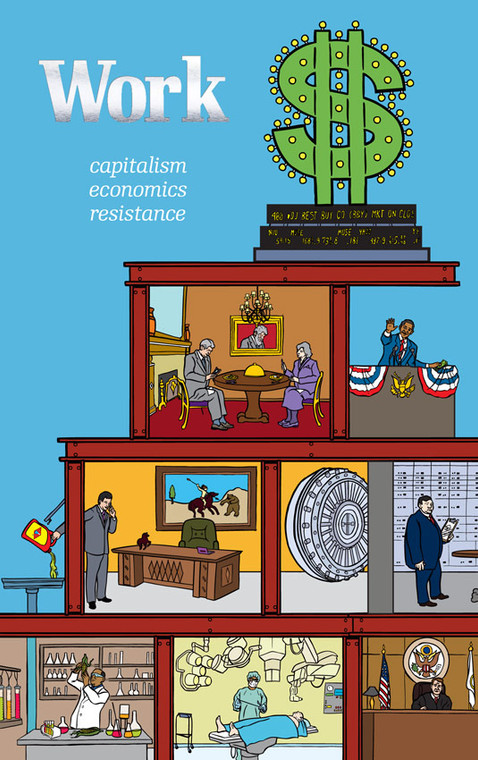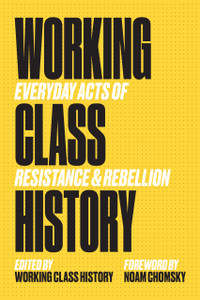
After so much technological progress, why do we have to work more than ever before? How is it that the harder we work, the poorer we end up compared to our bosses? When the economy crashes, why do people focus on protecting their jobs when no one likes working in the first place? Can capitalism survive another century of crises?
Our newest book, entitled Work, addresses these questions and a great many more. To answer them, we had to revisit our previous analysis of employment and develop a more nuanced understanding of the economy. We spent months studying obscure history and comparing notes about how we experience exploitation in our daily lives, slowly hammering out a grand unified theory of contemporary capitalism.
In addition to distilling our findings in this book, we’ve also prepared a poster to diagram the system it describes. The poster is based on the classic illustration of the pyramid of the capitalist systempublished in the Industrial Worker in 1911. With the assistance of Packard Jennings, we’ve created a new version, much more detailed than the original and updated to account for all the transformations of the past one hundred years.
In combination, the book and poster explore the positions we occupy within this pyramid and the mechanics that maintain it. From the industrial revolution to the internet, from the colonization of the Americas to the explosion of the service sector and the stock market, from the 2008 financial crisis to the upheavals taking place right now across the globe, Work offers an overview of how capitalism functions in the 21st century and what we can do to get beyond it.






